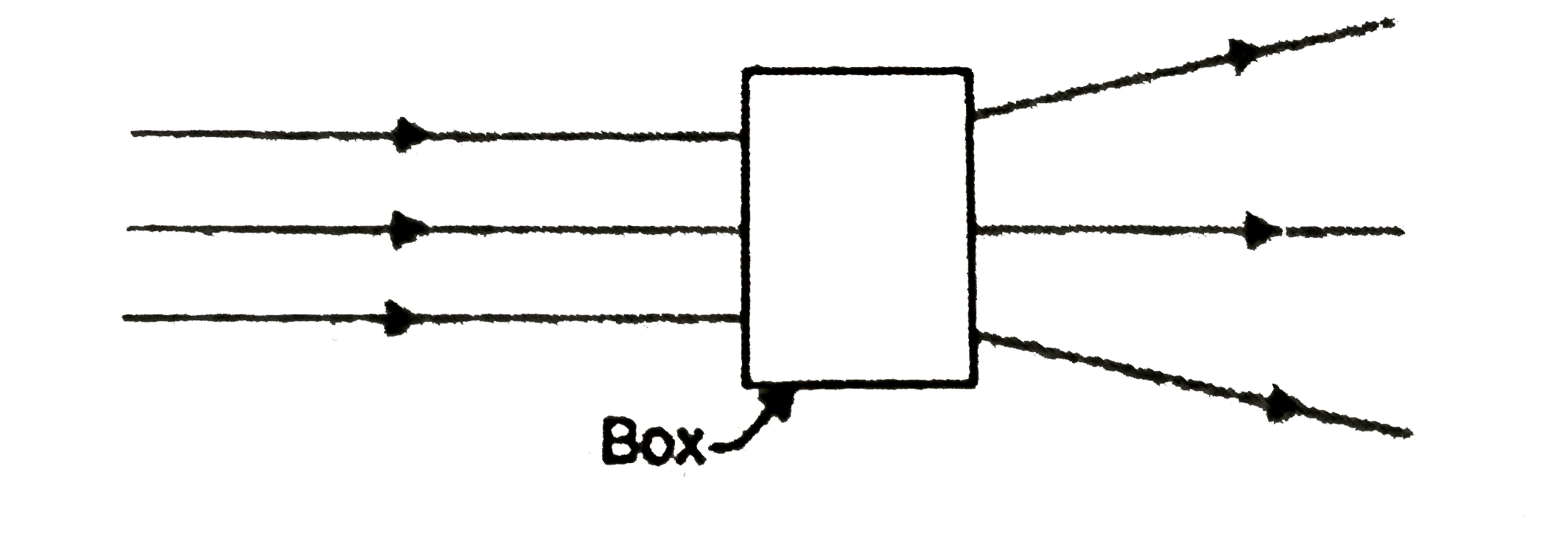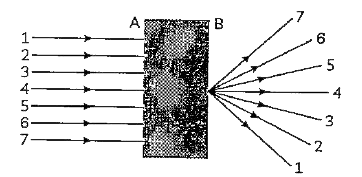Beams of light are incident through the holes A and B and emerge out of box through the holes C and D respectively as shown in Figure. Which of the following could be inside the box ?

A rectangular glass slab
A convex lens
A concave lens
A prism
The correct Answer is:A
In the given figure, emergent light rays are parallel to the direction of incident light rays. Out of the given options only a rectangular glass slab can change the path of light ray in such a way that emergent rays are parallel to the incident rays.
Similar Questions
A beam of parallel light rays is incident through the holes on one side of a box and emerges out through the holes on its opposite side as shown in the diagram below:

Which of the following could be inside the box?
View SolutionA beam of light is incident through the holes on one side of a box emerges out throught holes on its opposite side as shown in the following figure:

The box contains:
View Solution
Knowledge Check
A beam of light is incident through the holes on side A and emerges out of the holes on the other face of the box as shown in Figure. Which of the following could be inside the box ?
 Aconcave lensBRectangular glass slabCPrismDConvex lens
Aconcave lensBRectangular glass slabCPrismDConvex lensLenses made of transparent materials such as glass or plastic with curved surfaces. Diverging lenses are thicker at their edges than at their centres and make light rays passing through them spread out. Converging lenses are thicker in middle than at edges and make light rays passing through them focus at a point.
A beam of light is incident on the box through the holes on side A and emerges out of the holes on the side B of the box:

Which of the following is present the boxAConcave lensBRectangular glass plateCprismDConvex lensSixteen cylindrical cans each with a radius of 1 unit are placed inside a cardboard box four in a row. If the cans touch the adjacent cans and or the walls of the box, then which of the following could be the interior area of the bottom of the box in square units ?
A16B32C64D128
A point light source of 100W is placed at a distance x from the centre ofa hole ofradius R in a sheet as shown in figure, Find the power passing through the hole in sheet

View SolutionFigures shows a wave front P passing through two systems A and B, and emerging as Q and then as R. The systems A and B could, respectively, be

View SolutionThere are three tins filled with water and have holes of the same size as shown in figure. Which of the following options correctly identifies true (T) and false (F) for the given statements?

(i) The farthest spout is from the middle hole in case (a).
(ii) The stream of water falls out the farthest through the upper hole in case (b).
(iii) The farthest spout is from the lowest hole in case (c).
View SolutionA lens is fitted inside a tube. A parallel beam of light enters the tube, goes through the lens and emerges as a divergent beam, as shown in Figure QB-3. The lens in the tube

View SolutionFigure shows wavefront P Passing through two systems A and B, and emerging as Q and then as R. Then systems A and B could, respectively, be

View Solution
